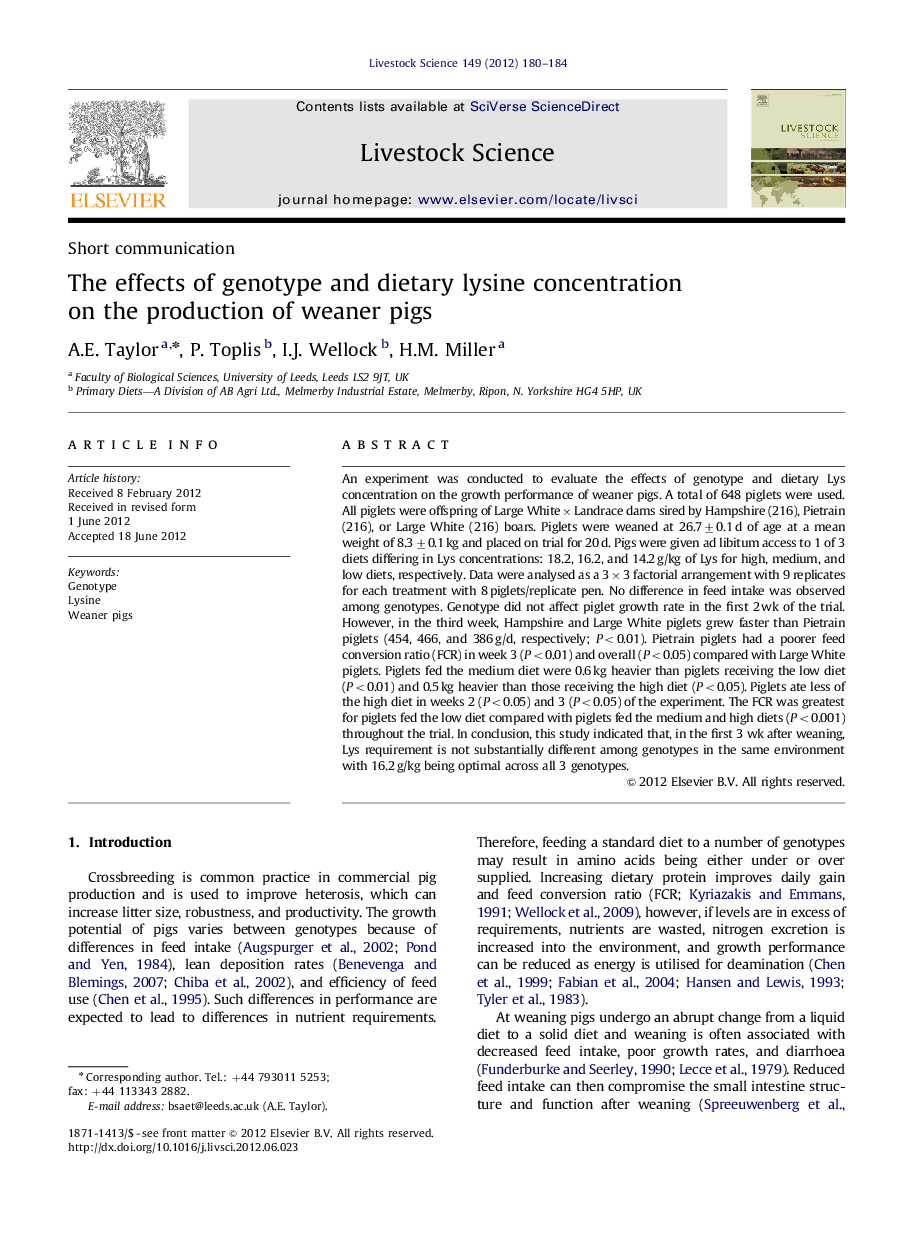| کد مقاله | کد نشریه | سال انتشار | مقاله انگلیسی | نسخه تمام متن |
|---|---|---|---|---|
| 5790718 | 1553983 | 2012 | 5 صفحه PDF | دانلود رایگان |
عنوان انگلیسی مقاله ISI
The effects of genotype and dietary lysine concentration on the production of weaner pigs
دانلود مقاله + سفارش ترجمه
دانلود مقاله ISI انگلیسی
رایگان برای ایرانیان
موضوعات مرتبط
علوم زیستی و بیوفناوری
علوم کشاورزی و بیولوژیک
علوم دامی و جانورشناسی
پیش نمایش صفحه اول مقاله

چکیده انگلیسی
An experiment was conducted to evaluate the effects of genotype and dietary Lys concentration on the growth performance of weaner pigs. A total of 648 piglets were used. All piglets were offspring of Large WhiteÃLandrace dams sired by Hampshire (216), Pietrain (216), or Large White (216) boars. Piglets were weaned at 26.7±0.1 d of age at a mean weight of 8.3±0.1 kg and placed on trial for 20 d. Pigs were given ad libitum access to 1 of 3 diets differing in Lys concentrations: 18.2, 16.2, and 14.2 g/kg of Lys for high, medium, and low diets, respectively. Data were analysed as a 3Ã3 factorial arrangement with 9 replicates for each treatment with 8 piglets/replicate pen. No difference in feed intake was observed among genotypes. Genotype did not affect piglet growth rate in the first 2 wk of the trial. However, in the third week, Hampshire and Large White piglets grew faster than Pietrain piglets (454, 466, and 386 g/d, respectively; P<0.01). Pietrain piglets had a poorer feed conversion ratio (FCR) in week 3 (P<0.01) and overall (P<0.05) compared with Large White piglets. Piglets fed the medium diet were 0.6 kg heavier than piglets receiving the low diet (P<0.01) and 0.5 kg heavier than those receiving the high diet (P<0.05). Piglets ate less of the high diet in weeks 2 (P<0.05) and 3 (P<0.05) of the experiment. The FCR was greatest for piglets fed the low diet compared with piglets fed the medium and high diets (P<0.001) throughout the trial. In conclusion, this study indicated that, in the first 3 wk after weaning, Lys requirement is not substantially different among genotypes in the same environment with 16.2 g/kg being optimal across all 3 genotypes.
ناشر
Database: Elsevier - ScienceDirect (ساینس دایرکت)
Journal: Livestock Science - Volume 149, Issues 1â2, November 2012, Pages 180-184
Journal: Livestock Science - Volume 149, Issues 1â2, November 2012, Pages 180-184
نویسندگان
A.E. Taylor, P. Toplis, I.J. Wellock, H.M. Miller,